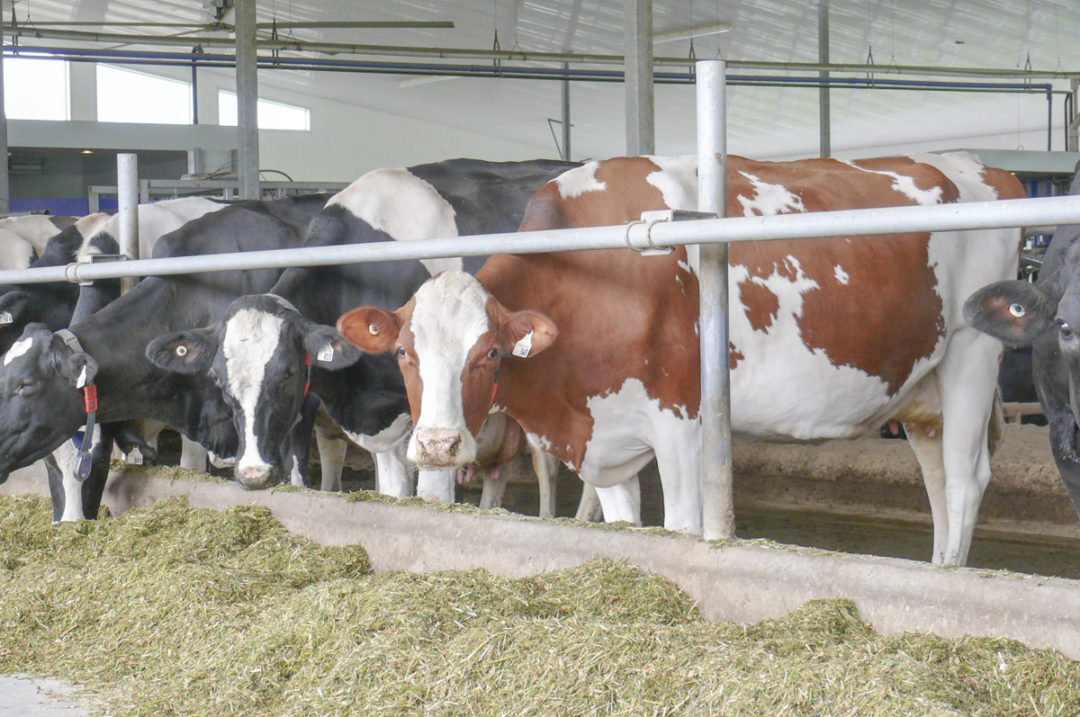Regenerative agriculture is a phrase growing in popularity within agriculture. Corporations are using the phrase to market their products and grow their businesses. Although this approach to farming is growing in profile, it remains lacking a clear definition, with the most common similarity between definitions being improving soil health. Regenerative agriculture focuses on using specific agricultural practices to build soil health and has potential implications and opportunities for the dairy sector.
What is regenerative agriculture?
Regenerative agriculture (Regen) is a group of principles that are implemented as a set of practices. A paper in 2018 outlines these and highlights the potential application in farming. These principles, although varying among definitions, remain similar. They include:
1. Abandoning tillage, which is more accurately represented as reducing tillage or practicing conservation tillage, which leaves crop residue on the ground.
2. Eliminating spatio-temporal events of bare soil, which entails the use of perennial cover crops.
3. Fostering plant diversity, meaning incorporating longer crop rotations and may include polycultures.
4. Integrating livestock and cropping operations, which includes the use of livestock production and cropping operations on the same land base.
The principles stated above are implemented by using specific practices. These practices are common methods of farming and include reducing tillage (conservation tillage), integrating multi-cropping systems by avoiding monocultures, adding cover crops to bare soil and grazing livestock over cover crops. These practices aim to improve soil health and soil carbon and increase biodiversity. Although these are not new methods of farming, by implementing several of these practices and fostering these principles in production systems, producers will have the ability to (re-)build soil health while still producing goods on their land base.

Regen in dairy
One important perspective is: Regen is a good fit with dairy production. It is most easily implemented with ruminant animals, on account of the interplay with the perennial forages already in the rotation and the added potential for the beneficial use of cover crops. When cattle are grazed, they have the potential to increase permanent soil cover of plants, reduce soil erosion, increase soil organic carbon and improve soil ecological function. Regen can be beneficial for cow health and soil health if practiced properly.
With the development of regen, there have been several certification programs created. Some of these certification programs include Regenerative Organic Certified (ROC), Ecological Outcomes Verification (EOV), Soil Carbon Initiative (SCI), and the Sustainable Agriculture Initiative (SAI) Platform recently added a regenerative agriculture module to its Farm Sustainability Assessment (FSA). These certification programs all have different requirements for products to be considered regeneratively produced. This is another example of the inconsistency that has been created due to the lack of a definition of regen.
Regen in dairy at Arla
Directing their focus away from solely organic and towards a regenerative system, Arla has been focusing on finding a definition for regen while documenting the alterations in biodiversity and soil health from its four-year pilot program. This pilot program consists of 24 dairy farmers in the UK and Europe with both confinement and grazing systems. With the help of Food Animal Initiative (FAI) Farms, Arla is exploring the potential of regen in the dairy industry. This includes focusing on three key parts of regenerative agriculture: biodiversity, soil health and carbon sequestration.
Danone moving into regen
Danone is a corporate leader in regen. Its alliance “Farming for Generations” provides farmers with support to convert to regenerative practices. Additionally, Danone donated its profit from one day of sales to help support farmers in their transition to regen. The alliance will focus on 25 dairy farms in the U.S. and Europe and spend the next three years evaluating the feed provided to the animals, the management and raising on-farm, and the milk being produced to see how the implementation of regenerative practices affects on-farm management and production. This program will help determine the potential for regen practices in the dairy industry.
In 2018, Danone stated that all its products made in France will be regeneratively produced – and in 2019, Danone provided assistance to over 1,000 farmers in their move to regen. These changes will help promote the potential regen has in the dairy sector.
Danone has developed a “scorecard” to assess the changes that have been made through regen. It will consider the current practices being used and develop a way for producers to integrate new practices into their production system. The scorecard is used to track changes and see the improvements being made through these practices and will cover three main topics: soil, water and biodiversity. A fourth category will be added for dairy farmers – manure. Each topic will be evaluated how well the producer has done in that area.
General Mills pilot program
General Mills is another corporation that is looking at regen as an alternative to conventional farming. In June of 2020, the company started a pilot program that included three dairy farms in Michigan which produce milk for Yoplait North American products. These producers will receive technical support and instructions on how to incorporate regenerative practices into their production system as well as receive cover crop seed for over 800 acres.
Additionally, General Mills has issued a regen self-assessment tool, a questionnaire that allows producers to determine how their practices align with regen. It will allow producers to answer questions and learn new ways to improve their practices.
Regen is here
As the regen discussion gains momentum within the agri-food industry, some dairy producers are making a point to incorporate these practices into their production system with signals from processors, retailers and consumers. The intent of this change is to reduce the environmental impact and soil degradation that may come with using conventional farming practices.
Regen aims to improve soil health by incorporating its principles and practices into production systems. Dairy producers in particular may be well suited to adopt regen, due to the role of diverse rotations including perennial forages used in cows’ diets. With these developments into more sustainable farming methods, Canadian dairy farmers have created their own assurance program, proAction. This program ensures dairy farmers are taking responsibility for their environmental impact as well as addresses the commitments it wishes to see dairy farmers adopt throughout Canada in the coming years. It will be interesting to see the potential alignment these programs have in the future with regen.
Sedley Benitz is a University of Guelph student working as the Livestock Sustainability Assistant under the supervision of Christoph Wand, Livestock Sustainability Specialist at the Ontario Ministry of Agriculture, Food and Rural Affairs (OMAFRA).











